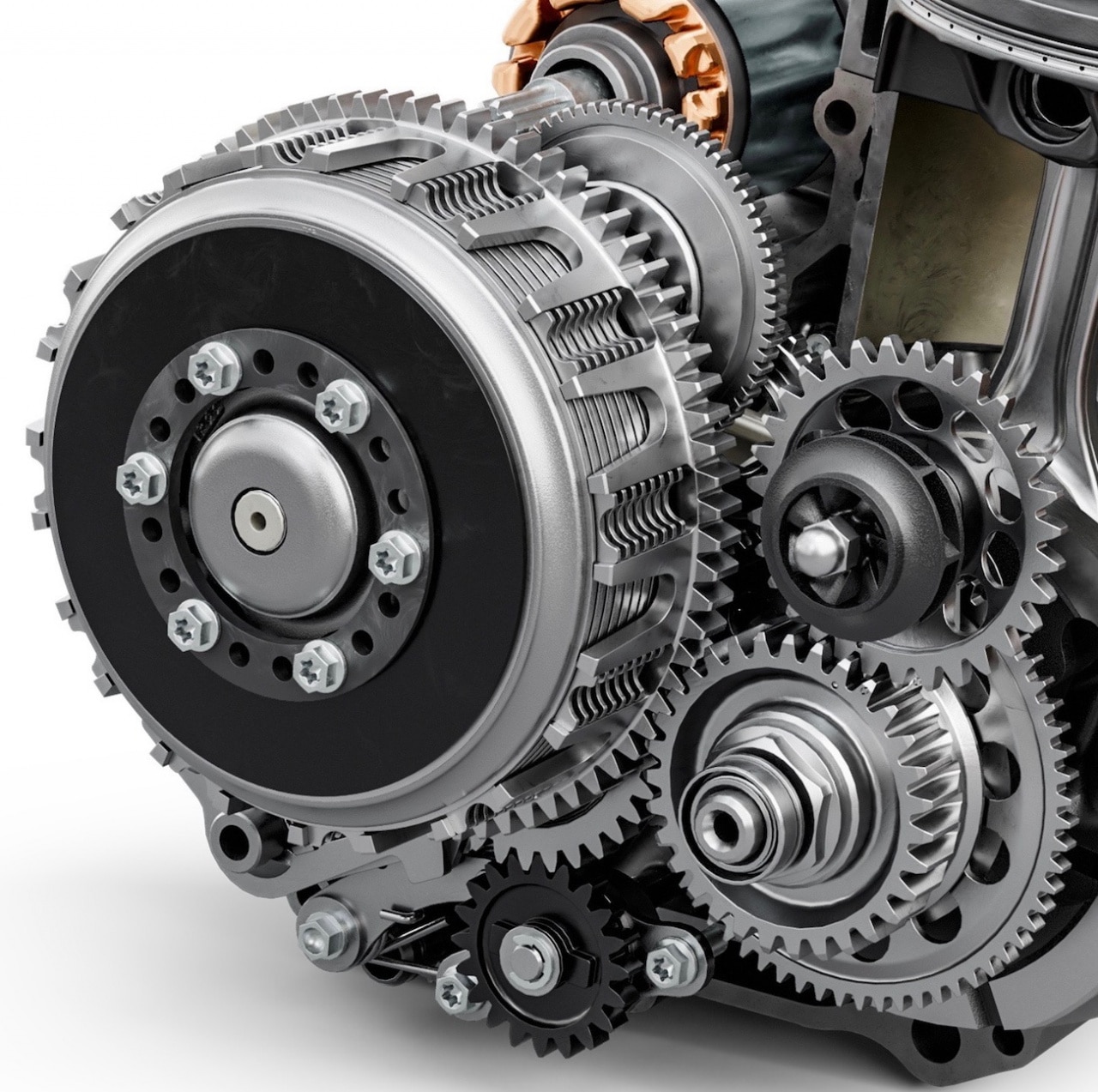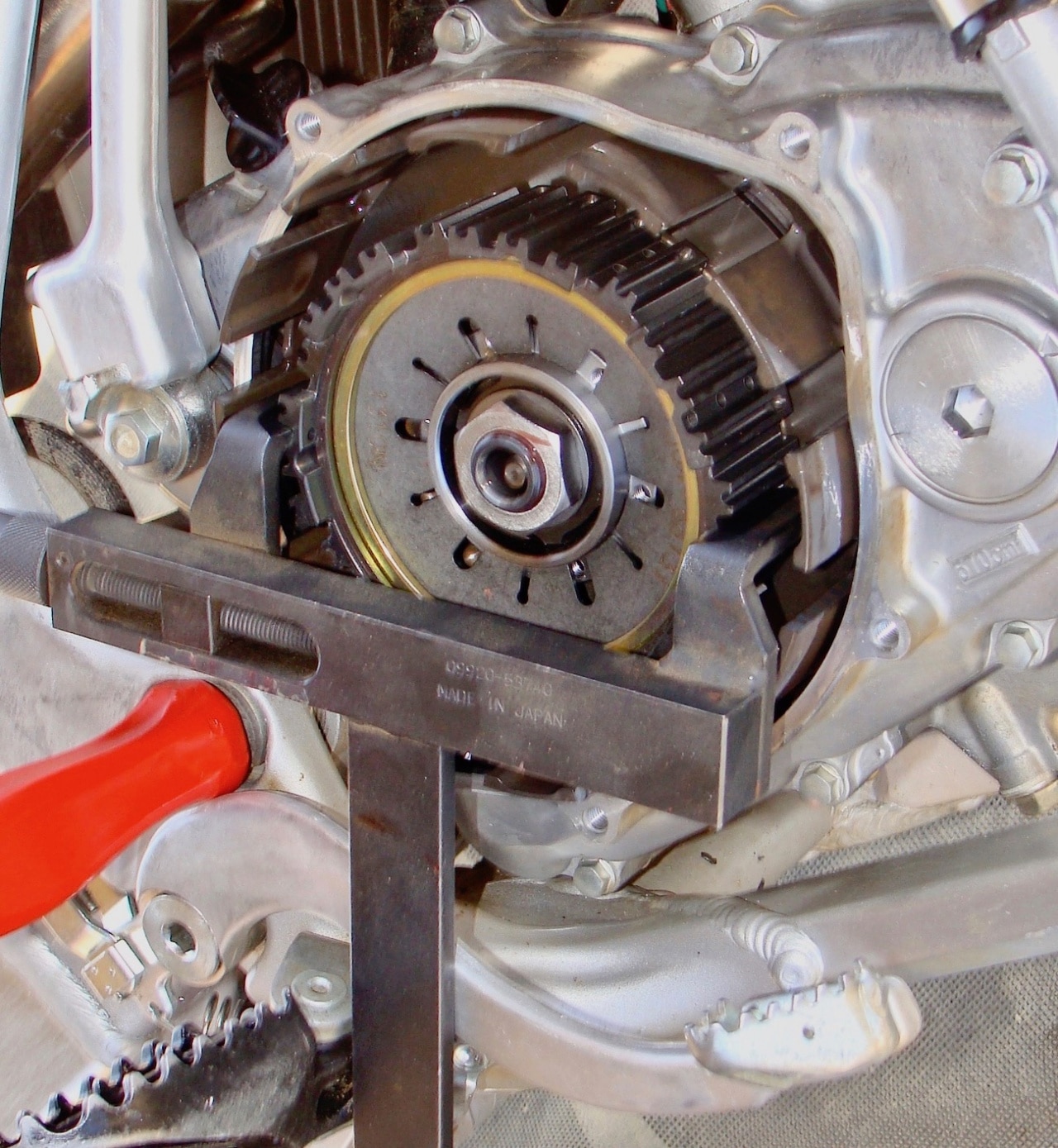ASK THE MXPERTS: WHAT HAPPENED TO SLIPPER CLUTCHES?
 Clutches are very simple devices that look very complex…and they are very complex when you turn them into slipper or auto clutches.
Clutches are very simple devices that look very complex…and they are very complex when you turn them into slipper or auto clutches.
Dear MXA,
My friend has a brand-new slipper clutch that he bought when he wanted to go Supermoto racing, but it turned out that he didn’t like Supermoto because there weren’t enough races in our state to justify the expenditure. So, he never installed the Hinson BTL slipper in his Honda. He says that it will fit in my CRF450, and he only wants $250 for it. I never hear anything about slipper clutches any more. Are they any good for motocross? How does it work? And what does a BTL clutch really do?
 Not only does a slipper clutch slip, but it looks odd when you get down into its moving parts.
Not only does a slipper clutch slip, but it looks odd when you get down into its moving parts.
By its very name, it is obvious that a slipper clutch slips. The Hinson Back Torque Limiter clutch (BTL) doesn’t slip all the time, only when the unique clutch mechanism senses deceleration. When you chop the throttle, like before braking bumps, halfway through the whoops or down steep hills, the BTL slipper clutch acts as though you’ve pulled the clutch lever in. Don’t confuse a slipper clutch with an automatic clutch (like the Rekluse RadiusCX). It is not an automatic; you still have to pull the clutch in to start, shift or stop. It just slips when you back off on the throttle.
How does it work? A slipper clutch is basically two clutches in one. The first clutch is activated by the clutch lever. The second clutch is activated by centrifugal forces within the spinning clutch basket. When the clutch’s internal moving parts decelerate, the difference in momentum disengages the clutch. Although the BTL is a regular clutch used to disengage the engine, its biggest advantages shows up in the chassis (where it works as an anti-chain torque device). When you chop the throttle on a big four-stroke, the decompression of the engine slows forward momentum dramatically. This creates wheel hop, which you feel as kicking on the entrance of turns, through braking bumps or in the whoops. A slipper clutch significantly lessens wheel hop in braking bumps and at the end of long whoop sections. Additionally, it lessens decompression braking and makes a four-stroke feel like a two-stroke on the entrance to turns.
If that isn’t enough, a slipper clutch hooks up more positively under acceleration, which makes it better in roll-on situations. When you combine the ability to freewheel into a turn with less wheel hop and better hookup on acceleration, you get quicker corner speeds. The last benefit of a slipper clutch is that it works as an anti-stall device. Although a slipper clutch can’t guarantee that you won’t stall your bike in a tight corner, it does make it less likely to cough, because the BTL clutch automatically disengages under deceleration (giving you time to get to the lever).
The Rekluse Radius auto clutch has lot of loyal users who don’t ever have to pull their clutches in ever again.
The question you have to ask yourself is, why would you want your clutch to slip every time you backed off on the throttle? The answer is simple. (1) A slipper clutch eliminates decompression braking and makes a four-stroke feel more like a two-stroke on the entrance to turns. (2) Slipper clutches are de rigueur in road racing and Supermoto because they eliminate wheel hop, especially on pavement. (3) The combination of four-stroke decompression braking and braking bumps at the end of a straight creates a condition known as “shock lock.” The co-action of rapid decompression braking, rear brake lockup and chain torque make four-strokes bounce through braking bumps. A slipper clutch lessens both chain torque and decompression braking. (4) In many ways a slipper clutch is not as much an engine mod as a handling mod. By pulling the clutch in for you, it helps the chassis and rear shock in braking bumps. It enables the rear suspension to be more free moving and less likely to lock-up, bounce or chatter any time you are slowing down .
 The Rekluse auto clutch has a very trick master slave unit that allows the push rod throw to be adjusted with an allen wrench from the out side. This may not mean much to you, but to a Rekluse user it makes life very easy.
The Rekluse auto clutch has a very trick master slave unit that allows the push rod throw to be adjusted with an allen wrench from the out side. This may not mean much to you, but to a Rekluse user it makes life very easy.
In answer to your question, there are motocross racers who like the feel of slipper clutches, but as far as the general population of racers goes, they never gained acceptance in motocross circles. Why not? It’s very complex design. There is a learning curve to riding with a slipper clutch, and the most common complaint of MXA test riders was that it couldn’t be slipped out of a corner like a conventional clutch. Given that a Hinson BTL clutch retails for $1700, your friend is offering you a great deal, you have to decide if what a slipper clutch does is what you want your clutch to do.






Comments are closed.